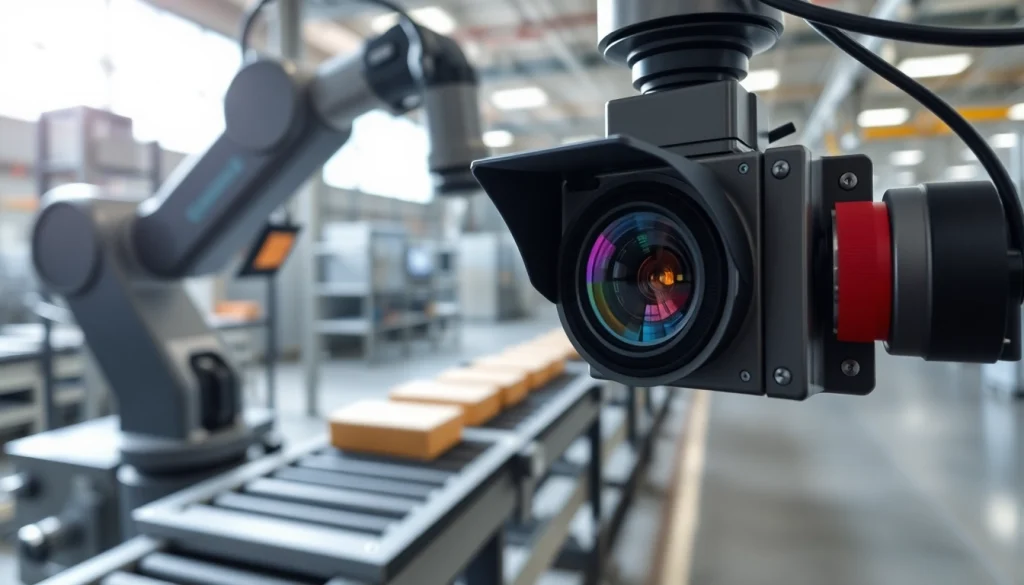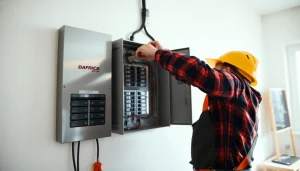Introduction to Machine Vision
Machine vision is evolving rapidly, serving as a cornerstone technology in many modern industrial applications. This discipline integrates imaging, processing hardware, and software algorithms to enable machines to interpret visual data in a manner comparable to human sight. Whether it’s ensuring quality control in manufacturing, guiding robotic systems, or enhancing medical imaging, the impact of machine vision is profound and multifaceted.
What is Machine Vision?
Machine vision comprises hardware and software tools designed to provide automated visual inspection, analysis, and guidance. At its core, machine vision systems use one or more cameras to capture images, which are then processed to extract meaningful data for analysis. Various technologies support these systems, including light sources, lenses, and sophisticated algorithms that allow machines to make decisions based on visual input. Major industries leverage machine vision to accomplish tasks ranging from quality assurance to process control and precision targeting.
The Evolution of Machine Vision Technology
Machine vision technology has its roots in the 1960s with the advent of simple optical systems. Over the decades, innovations in computer science and imaging technology have exponentially enhanced its capabilities. The integration of artificial intelligence (AI) in recent years marks a significant leap forward, allowing systems to not only capture and process images but also learn from interactions, enhancing their capability to identify defects, track products, and even predict failures.
Key Components of Machine Vision Systems
- Cameras: The fundamental component of machine vision, capturing high-resolution images. Types include CCD (Charge Coupled Device), CMOS (Complementary Metal-Oxide-Semiconductor), and line-scan cameras, each serving different applications.
- Illumination: Adequate lighting is crucial for image capture. Various lighting techniques are used, including diffuse, coaxial, and backlighting, tailored to the specific needs of the task.
- Processing Hardware: This can include CPUs, GPUs, or specialized embedded systems that perform rapid image processing tasks.
- Software Algorithms: These are the heart of machine vision systems, encompassing image processing, pattern recognition, and decision-making capabilities.
Applications of Machine Vision
The versatile nature of machine vision enables it to be employed across numerous fields. Below are some primary applications that highlight its importance.
Industrial Automation and Quality Control
In the manufacturing sector, machine vision systems automate quality control by detecting defects during various production stages. They monitor products in real-time, ensuring compliance with quality standards while significantly reducing human error. For instance, a machine vision system on an assembly line might check for proper orientation, affixation of components, and visual defects. The data collected can also feed into a big data system, providing insights into production efficiency and product quality trends.
Machine Vision in Robotics
Machine vision is integral to robotics, enhancing the autonomy and functionality of robotic systems. Robotic arms equipped with vision systems can perform precise tasks such as picking, placing, and assembling parts without human intervention. For example, self-driving vehicles use machine vision to navigate and understand their environments, making decisions based on visual data from cameras and sensors. The ability to analyze visual cues allows robots to work harmoniously within dynamic environments, adapting to changes in real-time.
Use Cases in Medical Imaging
In the healthcare sector, machine vision applications are revolutionizing medical imaging. Systems are deployed for diagnostic purposes, with imaging technologies such as MRI, CT scans, and digital pathology utilizing machine vision to enhance image clarity and analysis. For instance, machine learning algorithms optimize the detection of tumors in radiology by analyzing thousands of images for patterns that may go unnoticed by the human eye. Implementation of machine vision in this field not only improves diagnosis speed but also supports early detection and treatment plans.
Comparing Machine Vision and Computer Vision
While machine vision and computer vision are often discussed interchangeably, they serve different purposes within the framework of visual data interpretation.
Understanding the Key Differences
Machine vision is typically associated with industrial tasks, providing specific functionalities such as defect detection, assembly verification, or barcode scanning. It is often hardware-centric, making it reliant on cameras and imaging systems designed for specific applications. On the other hand, computer vision encompasses a broader scope, utilizing machine learning and AI techniques to understand and process images in various contexts beyond industrial use. This includes applications in fields like autonomous vehicles, facial recognition, and environmental understanding.
Benefits and Limitations of Each
The benefits of machine vision include high-speed inspections, consistent accuracy, and the ability to work in hazardous environments without human intervention. However, it can be limited by factors such as variations in lighting conditions, occlusions, or the complexity of tasks that may require advanced cognitive abilities. Conversely, while computer vision offers a wider array of applications and the learning ability to adapt to new datasets, it may require significant amounts of training data and computational resources.
When to Use Machine Vision vs. Computer Vision
The decision on whether to employ machine vision or computer vision primarily depends on the specific requirements of the application. Machine vision should be prioritized when tasks require precision, consistency, and speed in a controlled environment, such as in manufacturing and quality assurance. In contrast, computer vision is beneficial in scenarios involving diverse data inputs and environments, like autonomous navigation or complex image recognition tasks.
Best Practices for Implementing Machine Vision
Implementing a machine vision system requires careful planning and execution. Here are some best practices to consider.
Assessing System Requirements
Before choosing a machine vision system, it is crucial to assess the specific requirements of your application. This involves understanding the inspection needs, the environments in which the system will operate, and the types of defects or variations that must be detected. Conducting a thorough analysis of the workflow and incorporating input from stakeholders can help tailor the system to meet exact specifications.
Choosing the Right Hardware and Software
Selecting the appropriate hardware involves evaluating camera types, sensor specifications, and lighting solutions that best fit the task. Similarly, the software should be capable of supporting the desired image processing and machine learning capabilities, providing flexibility for future upgrades. Integration between hardware and software is crucial for achieving seamless operations.
Performance Metrics and Evaluation
Once the system is in place, evaluating its effectiveness through key performance indicators (KPIs) is essential. Metrics such as throughput, defect detection rate, and false positive rates provide insights into the system’s efficiency. Regular performance reviews and system calibrations can help maintain optimal functioning, ensuring that the machine vision system continues to deliver accurate outcomes over time.
Future Trends in Machine Vision
The future of machine vision is bright, driven by advancements in technology and increasing integration with AI.
Impact of AI on Machine Vision
AI is reshaping the landscape of machine vision by introducing intelligent algorithms capable of image classification, recognition, and analysis without explicit programming. Techniques such as deep learning are being utilized to enhance defect detection and predictive maintenance, allowing systems to learn from historical data and improve over time. The convergence of AI with machine vision will lead to more autonomous, self-improving systems that can adapt to new challenges in real-time.
Emerging Technologies in the Field
Technological advancements like 3D vision systems, multispectral imaging, and hyperspectral imaging are significantly enhancing machine vision capabilities. These technologies enable rich data extraction and improved accuracy in applications such as agricultural monitoring and environmental analysis. With the rise of edge computing, machine vision technologies are also becoming more decentralized, allowing for faster processing closer to the data source.
Predictions for the Next Decade
As industries continue to pursue automation and efficiency, the demand for machine vision systems is expected to grow exponentially in the coming decade. Key predictions include a surge in the adoption of AI-augmented visual systems, more robust and versatile platforms with enhanced integration capabilities, and a broader application scope ranging from logistics to smart cities. These trends will further emphasize the necessity for skilled professionals who can develop, implement, and maintain sophisticated machine vision solutions.








